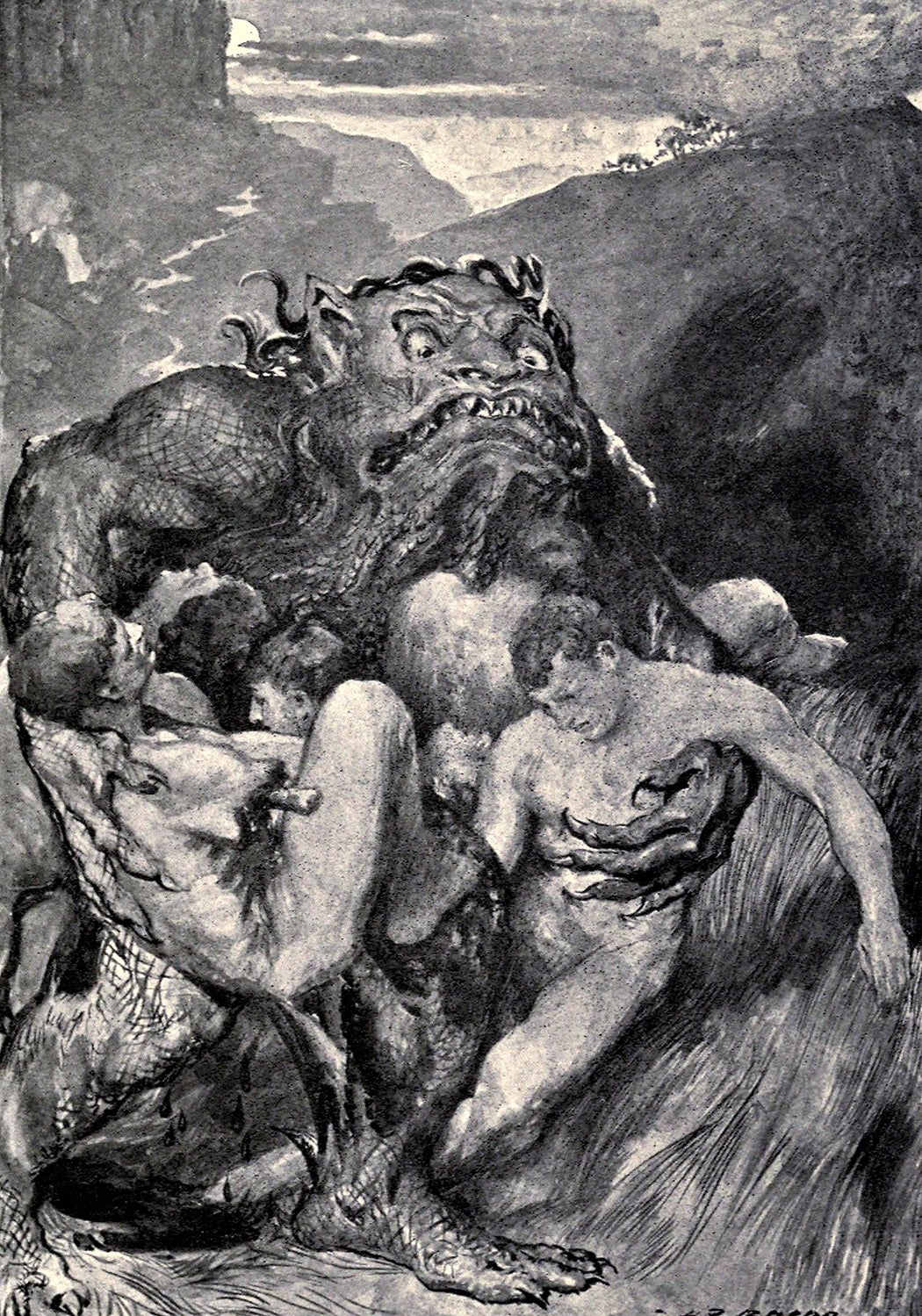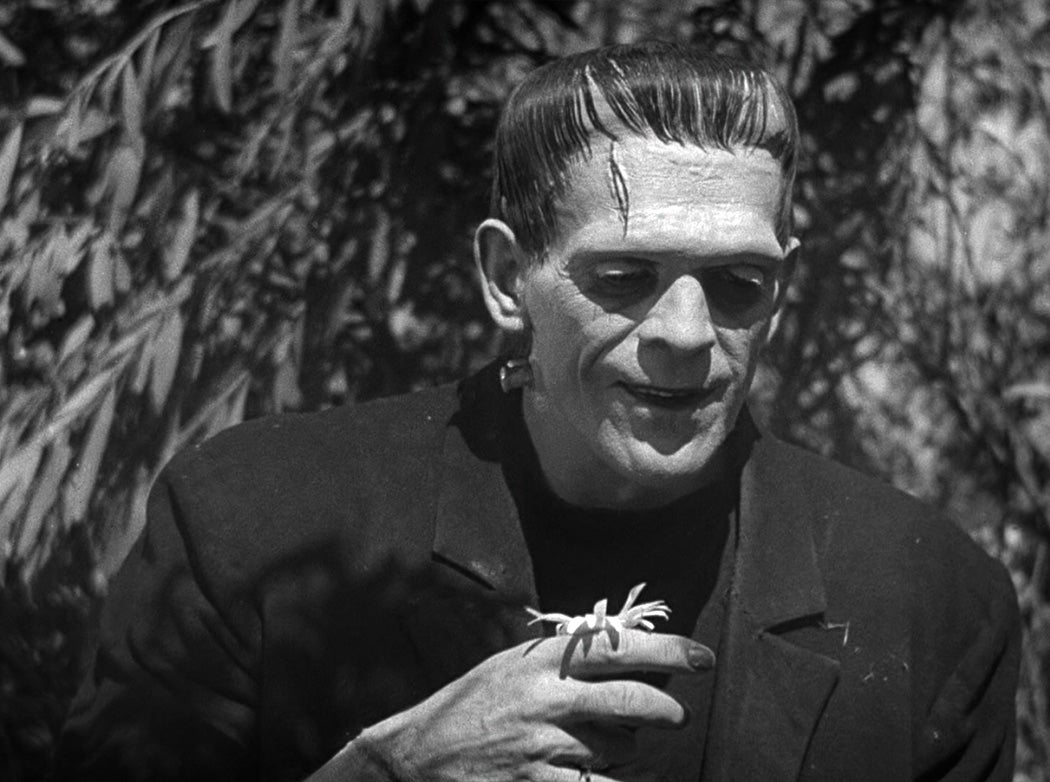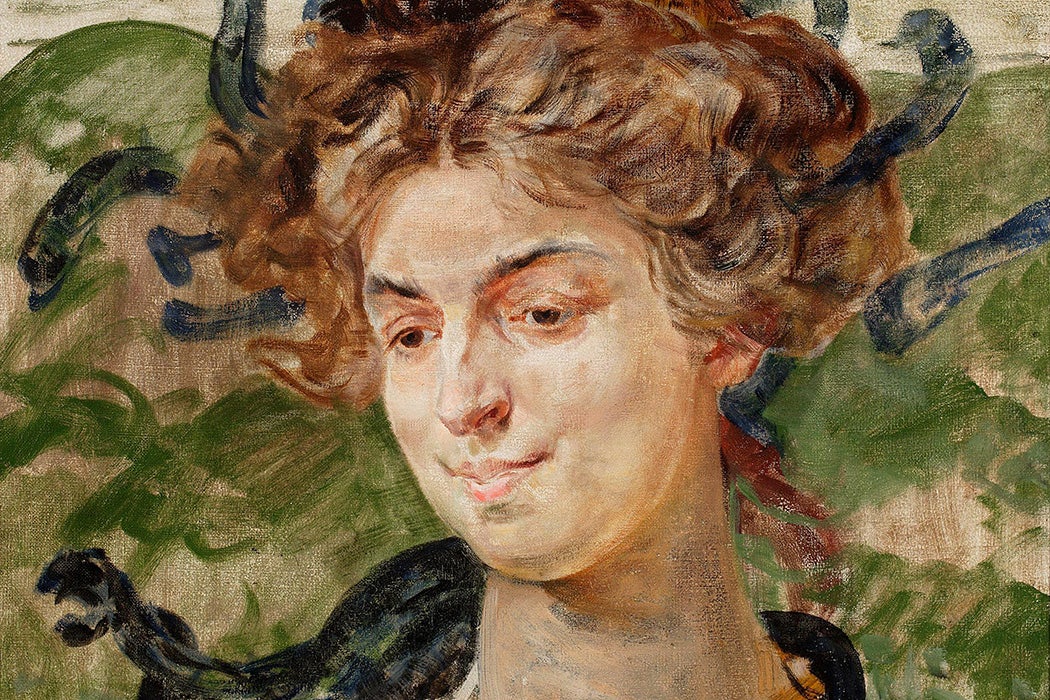Medusa is pure wickedness: an angry misandrist with venomous snakes for hair and the ability to turn a man to stone with only a look. That is, at least, how she is depicted in Thomas Bulfinch’s influential nineteenth-century text, Mythology. So too in Edith Hamilton’s updated Mythology, from 1942, and, as such, in much of contemporary popular culture.
In Ovid’s Metamorphoses, published around 8 CE, however, Medusa had a backstory that’s often elided in modern retellings. She was attractive and innocent when Poseidon (Neptune) lured her into Athena’s (Minerva’s) temple and raped her. When Athena found out, she turned Medusa’s hair into snakes, erasing her beauty.
Audio brought to you by curio.io
Though Freud posited that Medusa’s hair represented sexual repression, a symbol of castrated genitalia and the madness to which that might lead a person, the poet Ann Stanford, in her “Women of Perseus,” unpacks the more nuanced psychological effects of Medusa’s rape and the complications it adds to understanding her. Commenting on Stanford’s work, the poet and scholar Alicia Ostriker notes in her article “The Thieves of Language” that “the trauma ‘imprisons’ Medusa in a self-dividing anger and a will to revenge that she can never escape, though she yearns to.”
Weekly Newsletter
Consumed by this vengeful desire, Medusa might be not so much a monster as a tragic figure. Given the way her story as a “monster” has been told over the last few centuries, however, you’d be hard-pressed to know it.
When depicted as wholly and unchangeably evil, the classic monsters of literature and myth help make sense of a complex world, often with Biblical clarity and simplicity. The existence of pure evil implies the existence of pure good. Heaven or Hell. The Light Side of the Force or the Dark Side. Mount Olympus or Hades. The idea is that though we must choose a direction, it’s a straight and clear path.
Until the Enlightenment, this one-sided view of monsters was rampant. The word “monster” is likely derived from the Latin “monere,” which means “to warn,” writes the scholar Stephen Fox in Rutgers University’s The Scarlet Review—as in a warning from God that to deviate a little from norms is to deviate entirely into the realm of evil. The notion of total evil is an inherently Old Testament one: you either adhere wholly to the commandments of God and make the correct sacrifices and go to Heaven; or you do not, and you go to Hell.

J.R.R. Tolkien’s The Lord of the Rings—an overtly Biblical epic that seemingly takes place in the Middle Ages—made little room for nuance between good and evil. Orcs and Trolls and Sauron—these are absolute monsters with no redeeming values. “Tolkien was very clear about his monsters being intended as embodiments of pure malice and corruption, with no effort made to show any humanizing or empathetic aspects to them,” writes Fox.
The trap is to think of all literary and mythical monsters in these Biblical terms. Though God and Tolkien may have had certain ideas about evil… well, #NotAllMonsters. To look at even the most classic of fictional monsters is to see complications to this reductive version of evil. Grendel, for instance, the villain of the Old English epic poem Beowulf, might seem a clear-cut brute. He’s depicted as a giant and is said to be a descendent of Cain, from the Book of Genesis, adding to his essential evilness.
But upon a closer read one sees that the ostensible hero and Grendel have much in common. Both are characterized throughout the poem as having the “strength of 30 men in their arms,” as noted by the Old English literary scholar Andy Orchard in his book Pride and Prodigies: Studies in the Monsters of the Beowulf-Manuscript.

When Beowulf fights, he’s depicted as doing so in a “distinctly inhuman way,” Fox writes, matching the style of Grendel. Even Grendel’s home, which seems to be in a bog or swamp of some kind, forces Beowulf to come down to the monster’s level to battle with him. A fair inference is that Beowulf is not so different from Grendel; they are literally on the same level. Apparent good and apparent evil often mix and meld, complicating their boundaries.
Post-Enlightenment, literary monsters began largely to reflect social deviance. Intrinsic evil as a driving idea began to fall away. On the face of it, Mary Shelley’s Frankenstein is about the atrocity of Victor Frankenstein’s creation—no man has any business doing God’s work of creation. But to go deeper is to see that the central conflict of Frankenstein is not so much the relationship between creator and monster as it is the relationship between family and society. When Frankenstein’s mother is on her deathbed, she tells him that his fiancée, Elizabeth, “must supply my place,” mixing the role of mother and lover in Frankenstein’s mind. (To mix even further: his mother dies of the scarlet fever that Elizabeth had passed to her.) But Frankenstein puts off marrying Elizabeth, even at his father’s insistence. Instead of marrying and having a baby with her, as society would deem appropriate, Frankenstein “collected the instruments of life around [him] that [he] might infuse a spark of being into the lifeless thing that lay at [his] feet,” writes Shelley.

By choosing to forego his social responsibilities to marry and procreate, he inflicts “a wound upon the social body,” as Shelley writes. It’s his social choices that are deemed monstrous. Frankenstein’s actual monster becomes a symbol for the creator’s deviance. Only upon realizing that he has departed too far from social norms does Frankenstein decide that his creature must die. His last words: “[seek] happiness in tranquility and avoid ambition.” On his own deathbed, Frankenstein has finally learned his lesson: don’t mess with social norms.
Bram Stoker’s Dracula ends with the vampire’s execution, the monster’s death similarly restoring health to the community, as it represents the achievement of social cohesion following the threat of an outsider. Depicted as sexually suspect, Dracula, like Frankenstein and his monster, is a loner who foregoes his social duties. “Horror novels are often structured around conflict between the safety of a middle-class family home and queer-coded loners who seek its disruption,” writes the literary scholar Evan Hayles Gledhill in “Deviant Subjectivities: Monstrosity and Kinship in the Gothic Imagination.” “The ability to live as one chooses outside the constraints of the traditional pater familias is consistently presented as either a corruption… or a moral failing.”
Because norms have shifted significantly through recent history, many of the monsters of the past now seem like jokes. Bela Lugosi’s 1931 film performance as Dracula, for example, is no longer frightening to contemporary audiences because his overt queerness has been coopted as camp; his operatic black cape has become a kind of cultural gag. His social threat has been mostly neutered—and with it his capacity to frighten.
Today’s most ubiquitous monsters match contemporary moral panics. With Slender Man, a monster that originated as an online meme, his scariness is based on his supposed realness. Reified by the Internet’s echo chamber, young, very-online people post realistic-but-Photoshopped images of him and share supposed stories of encounters. When two teenagers stabbed a 12-year-old girl in Wisconsin in 2014, later telling authorities they were told to do so by Slender Man, the fictional became, for a moment, too real—adding to Slender Man’s perceived reality and thus his ability to scare.
Similarly, last year’s The Invisible Man movie remake with Elisabeth Moss turned the late-nineteenth century literary monster into a domestically abusive tech billionaire, playing in part on the idea that near-unlimited money might turn a man evil. As a critique of billionaire culture and a particular flavor of masculinity, this kind of monster legitimately scares because a version of it exists.
How might we view these contemporary monsters in a hundred years?
To play (literal) devil’s advocate, perhaps in an increasingly virtual world, Slender Man will seem tame, even funny, like Dracula does now. Perhaps the current version of the Invisible Man will be viewed as a victim of capitalism, ambition culture, and toxic masculinity. One might still wonder whether Medusa is an incorrigibly wicked monster. But if deep down she’s also an abused and traumatized person desperately trying to take matters into her own hands, is she even really a monster at all?
Support JSTOR Daily! Join our new membership program on Patreon today.







